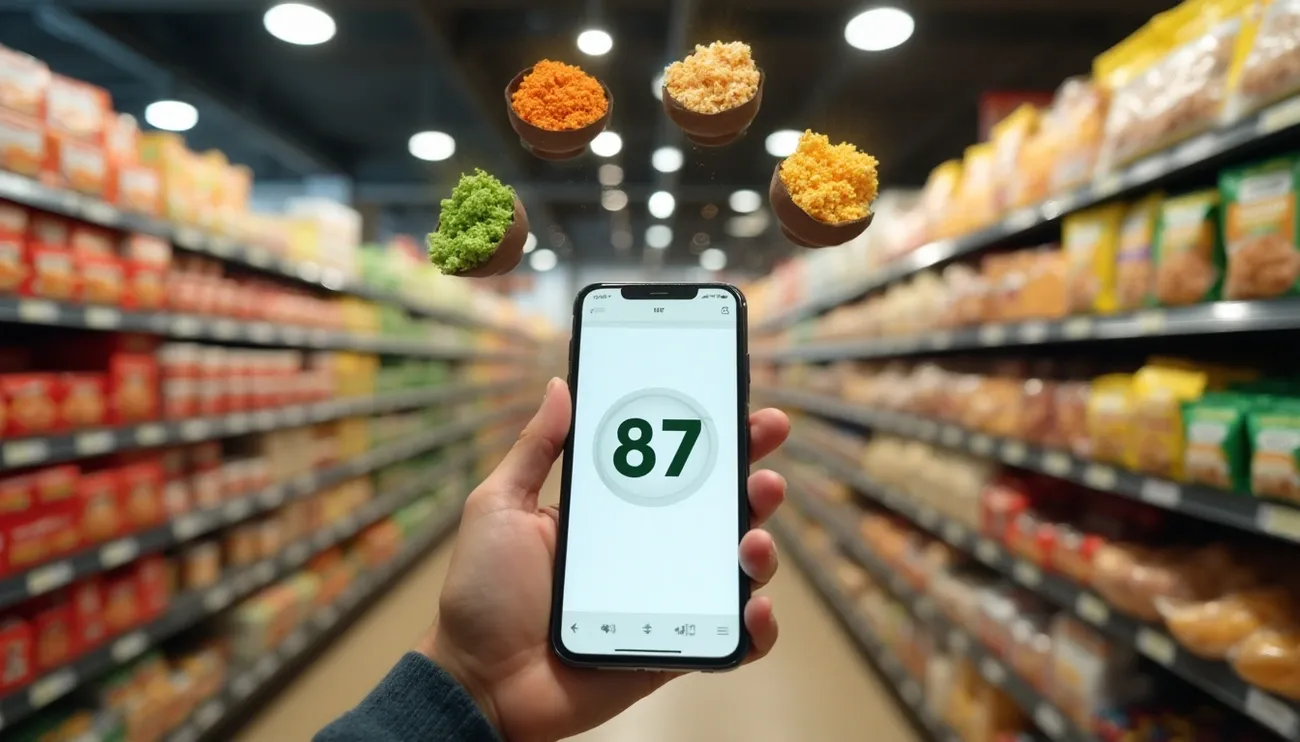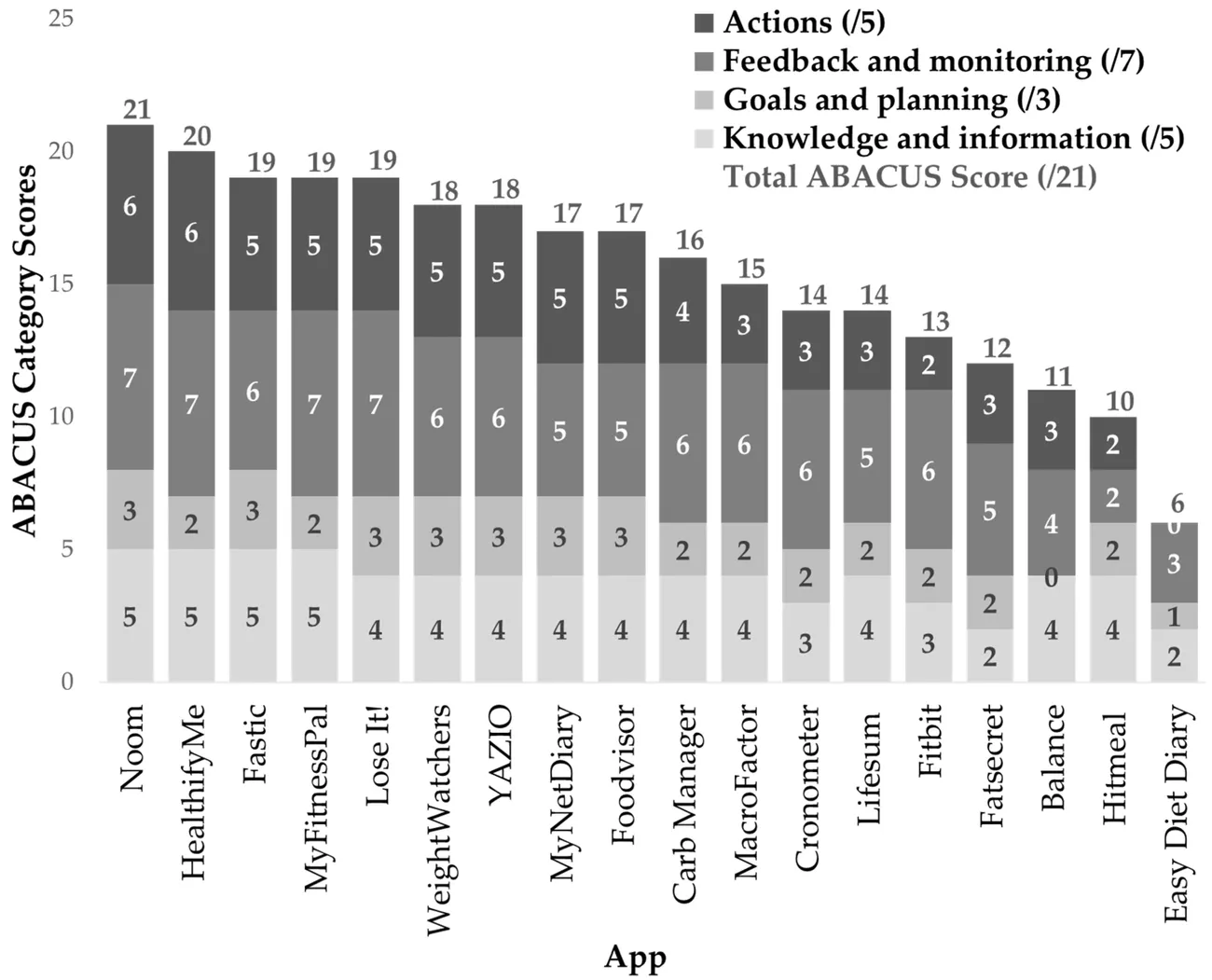Food Scan Genius & Yuka Food Scanner: How they’re Revolutionizing Grocery Shopping

The Food Scan Genius & Yuka food apps have changed the way we shop. Over 65 million users in 12 countries now use these app, making them top free choices in health and fitness. The apps make grocery shopping easier with a simple scanner that gives clear scores from 1 to 100. Yuka’s user-friendly traffic light system shows red for bad products, orange for poor choices, light green for good options, and dark green for excellent selections. Food Scan Genius is less judgmental and helps you identify if the product is suited to your personal preferences.
These app’s database now includes more than five million products and puts nutritional information right at our fingertips. The yuka app reviews products using three main factors: nutritional quality (60%), additives (30%), and organic certification (10%). The app’s ratings have made such an impression that European manufacturers have started changing their product formulas based on consumer feedback. Food Scan Genius has the added advantage of incorporating Conversational AI and AI Search for more detailed information.
These tools breaks down complex nutritional information into simple terms that shoppers can understand, especially those worried about food additives and health effects. The app goes beyond just pointing out problems – it suggests better alternatives for products with low scores.
What are the Food Scan Genius Yuka Food Scanner and How Does It Work?
The Yuka food scanner, which launched in France in 2017 [1], helps people decode product labels by scanning barcodes. This free mobile app has become a great tool that helps me make healthier choices at the grocery store. It gives me instant details about food and cosmetic products.
The Food Scan Genius app is built AI-first, showcasing the future of what such apps should look like. They help make decisions on products even outside their databases ( which is always challenging!) using Perplexity Search, Social reviews and other more modern technology.
If you liked Yuka, you’ll love Food Scan Genius – which offers a free download and a generous Ad-supported plan to get started.
Barcode Scanning and Instant Ratings
The app works in a simple way. When I open Yuka and tap the scan button, I just point my phone’s camera at a product’s barcode. The app shows me a complete evaluation within seconds. Yuka now uses the Scandit Barcode Scanner SDK, which scans faster and better than earlier technologies, even in poor lighting [2].
The app works with more than 20,000 types of smart devices [2], so almost anyone with a smartphone can use it. Users can add products that aren’t in Yuka’s huge database by taking photos and sorting items [1]. Thanks to this community effort, about 1,200 new products join the database every day [2].
Color-Coded Score System Explained
Each scan shows a score from 0-100 with a color-coded result that makes everything easy to understand. The colors mean:
- Dark Green (75-100): Excellent
- Light Green (50-74): Good
- Orange (25-49): Poor
- Red (0-24): Bad [3]
I can tap on any rating to see exactly why a product got its score. This clear approach helps me make smart choices without knowing complex nutrition science.
On top of that, Yuka suggests healthier options from the same category when products score poorly [4]. These suggestions come from looking at similar products, health ratings, and what’s available in stores [2].
Yuka Food App vs Cosmetic Scanner Features
Yuka started as a food scanner but grew to include cosmetics in 2018 because users just needed it [2]. The database now has about 3 million food products and 2 million cosmetic items [5].
Yuka reviews food based on three main factors:
- Nutritional quality (60%): Uses the European Nutri-Score to look at calories, sugar, sodium, saturated fats, protein, fiber, and fruit/vegetable content
- Additives (30%): Rates each additive’s risk level based on scientific research
- Organic certification (10%): Gives extra points to products with official organic labels [6]
The cosmetics scanner works differently and focuses on ingredient safety instead of nutrition. Each ingredient gets a risk rating based on what it means for health, including whether substances disrupt hormones, cause cancer, trigger allergies, irritate skin, or harm the environment [3].
Yuka stays independent and doesn’t take money from brands or manufacturers [4]. This keeps their reviews honest. Users who want more features can get a premium version that works offline and lets them look up products without barcodes [1].
Inside the Algorithm: How Yuka Scores Food Products

Image Source: MDPI
The Yuka app’s impressive food rating system works through a sophisticated three-part algorithm that gives us those color-coded ratings we see after scanning a product. Let’s get into how these scores work to help us make better food choices.
Nutritional Quality: 60% Weightage
Nutritional quality forms the foundations of Yuka’s scoring system and makes up 60% of the total score [7]. The system uses the Nutri-Score method, which seven European countries have adopted [8]. The World Health Organization’s International Agency for Research on Cancer (IARC) backs this approach because it guides consumers to healthier food options [7].
Nutri-Score looks at these key nutritional elements:
- Calorie and energy density
- Sugar content
- Sodium levels
- Saturated fat amounts
- Protein content
- Fiber content
- Percentage of fruits, vegetables, and nuts [9]
A visual scale shows these components from green (excellent) to orange and red (poor). This gives users a quick look at a product’s nutritional profile. The app then converts these values into their share of the overall Yuka score.
Additives and Their Risk Levels: 30%
Additives make up 30% of a product’s final score [7]. The app rates each additive in one of four risk categories based on scientific research:
| Risk Level | Visual Indicator | Score Impact |
|---|---|---|
| Risk-free | Green dot | No impact on score |
| Limited risk | Yellow dot | -6 points per additive |
| Moderate risk | Orange dot | -15 points per additive |
| High risk | Red dot | -30 points, maximum score capped at 49/100 |
A single high-risk additive will cap a product’s maximum score at 49/100, putting it in the “poor” category whatever other qualities it has [9][4]. To cite an instance, a vegetable stock with monosodium glutamate (MSG) might score as low as 9/100, and the app flags this additive as hazardous [9].
Organic Certification: 10%
Products with official organic certification get a 10% bonus [7] in Yuka’s algorithm [link_3]. Items carrying recognized national or international organic seals automatically receive this boost [9]. This bonus reflects how organic products have less exposure to synthetic chemicals and pesticides.
Organic farming uses fewer synthetic substances substantially. The European Union allows 363 commercial products in organic farming compared to 2,668 in conventional agriculture [10]. The United States shows a similar pattern with only 82 additives permitted in organic farming versus more than 500 in conventional products [10].
Data Sources: User Input vs Manufacturer Data
The core team at Yuka reviews products and additives continuously. Two full-time specialists – a toxicology expert and a food engineering and nutrition professional – look through scientific research on about 600 food additives [8]. They base their reviews on recommendations from the European Food Safety Authority (EFSA), the International Agency for Research on Cancer (IARC), and many independent studies [7].
Yuka’s additive risk assessment [link_4] looks at:
- Collective assessment reports from organizations like the FDA, EFSA, WHO, and others
- Independent scientific studies, with systematic reviews and meta-analyzes getting top priority [11]
The app’s database grows as users contribute. People can add new products by taking photos of items and their nutrition information that aren’t yet in the system. This community effort adds about 1,200 new products daily [8].
Yuka stays independent by avoiding ads and brand sponsorships. The app makes money through premium subscription fees instead. This business approach lets them give unbiased product ratings [9].
Real-World Testing: Using Yuka in Everyday Grocery Shopping
The Yuka food scanner revolutionizes everyday grocery shopping. Americans love this app – more than 20 million have downloaded it since its 2022 U.S. launch [2]. The numbers doubled between January and June 2024, with 25,000 new U.S. users joining daily [5].
Examples of Surprising Product Scores
Users often feel shocked when they scan familiar products. Marissa Gradei, a 27-year-old social media manager, couldn’t believe her eyes when her go-to Cheez-Its scored a mere 2/100. She had always thought of them as a “healthier” snack option [2]. A shopper got quite a shock too when their handwash scored 0/100. The culprit? Benzophenone-1, an endocrine disruptor that “easily crosses the skin barrier and then behaves like female hormones” [12].
Other unexpected findings include:
- Diet Coke scores 41/100 though it has a “green” rating in the UK’s Traffic Light system [12]
- Oat milk gets surprisingly low scores around 49/100 despite its healthy reputation [13]
- Vegetable stock barely reaches 9/100 because of monosodium glutamate (MSG) [6]
- Store-brand tomato sauces beat expensive name brands [6]
These revelations change shopping habits quickly. Studies show people scan products most often when they’re new, ultra-processed, or linked to health concerns [3].
How Yuka Suggests Healthier Alternatives
Yuka points users to healthier options right after spotting problems in a product. Take table salt – the app might suggest sea salt as a better choice [13]. This makes switching to healthier options much easier.
The recommendation system isn’t perfect though. People sometimes reject suggestions they find “too different” from their usual products or that don’t fit family eating habits [3]. Users accept alternatives more readily when prices match or beat the original item.
Yuka 100/100 Food: What Qualifies?
Top-scoring products share some key traits. Plain organic wholewheat pasta and Weetabix cereal often hit the highest marks [14]. A bolognese pasta sauce that scored 90/100 shows processed foods can excel too if they skip problematic additives [13].
Products need these qualities to hit that perfect 100/100:
- Minimal to no additives
- Organic certification (earning the 10% organic bonus)
- Excellent nutritional values (low sugar, low salt, high protein/fiber)
Brands now check Yuka scores while developing products to improve their formulas before launch [12]. You might want to try the Food Scan Genius app alongside Yuka. This extra view could help you make smarter choices at the grocery store.
Strengths of the Yuka App for Food Transparency
Yuka food scanner’s steadfast dedication to consumer interests sets it apart from other apps. Three key advantages have helped it gain trust from 55 million users worldwide [15].
Independent and Ad-Free Platform
Yuka’s business model stands out with its transparency. Brands can’t pay for ads or influence product ratings in any way [16]. This keeps all scores and recommendations objective without manufacturer influence [16]. Users fund the app through premium subscriptions that cost $10-$50 yearly, which helps maintain its independence [2]. The app’s premium version earned €777,771 ($850,000) in 2020, showing this user-funded model works well [4]. The 15-person team at yuka app for food states proudly, “Revenues come from users, never from brands” [16].
User-Friendly Interface and Visual Design
Yuka’s simple design makes it easy for everyone to use. Users can scan barcodes quickly and see results that don’t overwhelm them [1]. The app uses colors from red (bad) to forest green (excellent) that users find “easy and clear to use” [6]. The app also lets you customize settings based on your diet restrictions or health goals, so products get rated on what matters to you rather than generic standards [1].
Effect on Consumer Awareness and Brand Reformulation
Yuka food app has changed more than just shopping habits – it’s reshaping the industry. 92% of users report buying fewer ultra-processed foods after they start using the app [17]. Families benefit too, with 89% of parents using Yuka with their children to learn about nutrition [17]. These changes have pushed companies to act – French supermarket chain Intermarché removed 142 controversial additives from 900 products after getting user feedback [18]. The app has grown from a simple scanner into a revolutionary force for product improvement across Europe [4].
Limitations and Criticisms of Yuka’s Scoring System
Nutrition and health experts highlight several key limitations in the Yuka food app’s approach, despite its many benefits. Users who rely on this app to make dietary decisions should think over these shortcomings carefully.
Over-Simplification of Complex Nutrition
The Yuka food scanner’s 100-point scoring system makes things simple but oversimplifies nutrition science. The algorithm weighs certain factors too heavily while it might undervalue others. To cite an instance, see how the app assigns only 60% of the score to nutritional quality. Many dietitians believe nutrition should carry more weight. The system cannot account for your individual metabolic differences or specific health conditions that need individual-specific dietary approaches.
Nutritionists worry that Yuka’s ratings sometimes go against well-established dietary guidance. A registered dietitian points out: “The app might give a high score to a product with minimal additives but poor nutritional value, or conversely, a low score to a nutritionally balanced item containing a single controversial additive.
Concerns About Additive Risk Interpretation
Yuka’s handling of food additives raises equal concern. The app ranks additives by risk levels, but nutrition scientists note these assessments often clash with regulatory authorities’ findings. The app labels certain additives as “high risk” even when health agencies like the FDA or EFSA have deemed them safe at normal consumption levels.
Consumers face confusion when choosing between Yuka’s advice and established regulatory bodies. The app’s simple way of labeling additives as either “safe” or “risky” fails to capture how risk varies with dosage, consumption frequency, and your body’s sensitivity.
Potential for Food Anxiety and Orthorexia
Mental health professionals raise red flags about how food scanning apps might affect eating habits negatively. Scanning products constantly and avoiding foods with low scores can trigger or worsen orthorexia—an unhealthy obsession with “correct” eating.
Mental health experts warn that apps focused only on food purity might unintentionally encourage strict eating patterns. Your regular grocery shopping can become anxiety-inducing, especially if you have tendencies toward disordered eating patterns.
Conclusion
My deep dive into the Yuka food scanner shows how this app has revolutionized grocery shopping by making everything transparent. The color-coded system gives shoppers quick insights at a glance, and detailed breakdowns explain why products get specific scores. This explains why over 65 million users now use Yuka to make healthier food choices.
The app scores products in three ways, which seems fair. However, the 30% weight given to additives sparks some debate. All the same, the results speak clearly – 92% of users buy less ultra-processed foods. On top of that, food makers across Europe have changed their recipes just to score better on Yuka, which shows its influence goes beyond individual shoppers.
Yuka does have its drawbacks. It makes nutrition science look simpler than it really is. Sometimes it goes against long-standing dietary advice, which leaves health-conscious shoppers confused. Mental health experts also worry that too much focus on “pure” food might push some people toward orthorexia.
Yuka is a great tool that helps you make smarter food choices, especially if you’re just learning to read nutrition labels. It works best as one of several resources rather than your only guide to food quality. Should you get it? Yes – but combine it with simple nutrition knowledge and common sense. This approach will help you get the most from Yuka’s transparency while avoiding its shortcomings.
FAQs
Q1. How accurate is the Yuka app’s scoring system?
The Yuka app uses a scientifically-based scoring system that considers nutritional quality, additives, and organic certification. While it provides valuable insights, it’s important to remember that it simplifies complex nutritional information and may not account for individual dietary needs.
Q2. What constitutes a good score on the Yuka app?
Yuka uses a color-coded system: Dark green (75-100) is excellent, light green (50-74) is good, orange (25-49) is poor, and red (0-24) is bad. A score above 75 generally indicates a healthy product with minimal risk of problematic ingredients.
Q3. Does Yuka accept payments from companies for better ratings?
No, Yuka maintains its independence by not accepting funding from brands or manufacturers. The app generates revenue through premium subscription fees, ensuring unbiased product evaluations.
Q4. Where does Yuka source its product information?
Yuka’s database is built from multiple sources, including user contributions, brand-provided data, and open-source databases. The app also employs a team of experts to evaluate products and additives based on scientific research and recommendations from authoritative bodies.
Q5. Can using the Yuka app lead to unhealthy eating behaviors?
While Yuka aims to promote healthier food choices, some experts caution that excessive focus on food purity could potentially contribute to anxiety or orthorexia in susceptible individuals. It’s advisable to use the app as one of many tools for making informed food choices, rather than the sole authority.
References
[1] – https://www.consumersearch.com/technology/yuka-app-vs-nutrition-apps-sets-apart
[2] – https://www.nytimes.com/2025/06/03/well/eat/yuka-nutrition-app-maha-benefits.html
[3] – https://www.foodnavigator.com/Article/2019/08/20/Evaluating-the-Yuka-phenomenon-How-effective-is-the-scanning-app-in-practice/
[4] – https://www.foodnavigator.com/Article/2022/08/10/Five-years-of-Yuka-Co-founder-talks-strategy-impact-and-evolution-of-food-scanning-app/
[5] – https://www.beautyindependent.com/yuka-beauty-industry-insiders-question-product-ratings/
[6] – https://www.wcrf.org/about-us/news-and-blogs/healthy-new-you-the-yuka-app-review/
[7] – https://help.yuka.io/l/en/article/ijzgfvi1jq-how-are-food-products-scored
[8] – https://scangeni.us/is-yuka-accurate-we-tested-1000-products-to-find-out/
[9] – https://scangeni.us/yuka-app-ultimate-guide-the-truth-about-this-revolutionary-food-cosmetic-scanner-2025/
[10] – https://yuka.io/en/organic-food-health/
[11] – https://help.yuka.io/l/en/article/yth80j3vle-sources-analysis-of-food-additives
[12] – https://www.wired.com/story/yuka-app/
[13] – https://www.womenshealthmag.com/uk/food/a60600254/yuka-app-review/
[14] – https://nz.news.yahoo.com/shocking-things-learned-using-food-165650648.html
[15] – https://about.greenchoicenow.com/resources/yuka-app
[16] – https://yuka.io/en/independence/
[17] – https://yuka.io/en/social-impact/
[18] – https://sustainablebrands.com/read/yuka-users-appeal-directly-brands-healthier-products






27 Comments
Your comment is awaiting moderation.
I’ve been exploring for a little for any high-quality articles or blog posts on this sort of
area . Exploring in Yahoo I ultimately stumbled upon this web site.
Studying this information So i am glad to express that I’ve a very just right uncanny feeling I found out just what I needed.
I such a lot without a doubt will make sure to do not put out of your
mind this site and give it a glance on a continuing basis.
[…] both the Food Scan Genius and Yuka apps for free and try them yourself to see how technology helps spot allergens and gives you peace […]
[…] scenario is all too familiar for those with food sensitivities. The emotional toll of being misunderstood or excluded can be as significant as the physical discomfort caused by the wrong foods. According […]
[…] Should I trust Yuka for all my product choices? While Yuka can be a helpful tool, it’s best used in combination with other sources of […]
[…] Whole, unprocessed foods are the best for your diet. They’re full of nutrients, fiber, and plant compounds that boost health. Choosing whole foods over processed ones is crucial for your dietary facts and nutritional information. […]
[…] Instantly access detailed nutritional information through barcode scanning […]
For most up-to-date news you have to visit world-wide-web and on the web I found this website as a best site for latest updates.
Appreciating the time and effort you put into your blog and detailed information you provide.
It’s awesome to come across a blog every once in a while that isn’t the same out of date
rehashed material. Excellent read! I’ve saved
your site and I’m including your RSS feeds to my Google account.
[…] Numbers tell a compelling story about Yuka’s effect on consumer choices: […]
[…] Brand transparency and safety ratings […]
[…] is another popular app that evaluates food products based on their health impact, using a simple color-coded system. By scanning a product at the stadium, fans can quickly determine if it aligns with their health […]
[…] Yuka ranks products on a health scale based primarily on nutrients, additives, and processing level. But many users want more: […]
[…] you scan a product using the Yuka app, it provides a color-coded rating (green for excellent, yellow for okay, orange for poor, and […]
[…] How can I check if a fast food menu item is safe for my […]
[…] provides a holistic health score for thousands of food products, taking into account additives, allergens, and nutritional value. Its user-friendly […]
[…] allergens in packaged foods, making it easier for travelers to select safe snacks before boarding. Yuka provides detailed breakdowns of food and cosmetic product ingredients, helping those with sensitivities to avoid problematic […]
[…] As cultural venues and culinary destinations evolve, technology is playing a pivotal role in making experiences safer and more inclusive for everyone. Two standout tools are Food Scan Genius and Yuka: […]
[…] technology continues to advance, apps like Food Scan Genius and Yuka will play an increasingly important role in supporting these efforts. By combining education, […]
[…] Updates: Yuka’s database is regularly updated to reflect new products and ingredient changes, keeping families […]
[…] alerts. Yuka’s impact shows clearly in the numbers – 92% of its users buy fewer ultra-processed foods and make healthier choices. The allergy app category has grown substantially, with allergen […]
[…] nutrition labels from your recipes with several free online tools. These calculators connect to food databases and give you accurate nutritional […]
[…] both the Food Scan Genius and Yuka apps for free and try them yourself to see how technology helps spot allergens and gives you peace […]
[…] now fill supermarket shelves. Bread and frozen meals top the list of most eaten items in America [2]. These products add up to 90% of total calories from added sugars [2]. This […]
[…] Halal Vietnamese food, Vietnamese banh mi, Food sensitivities Dubai, Healthy Vietnamese cuisine, Food Scan Genius Dubai, Yuka app UAE, Halal banh mi Dubai, Vietnamese food trends 2025, Dubai food […]
[…] it may be challenging to distinguish between benign and serious symptoms. Use tracking tools like Food Scan Genius to monitor your reactions, and seek medical advice if symptoms persist or […]
[…] Clearly labeling ingredients and potential allergens in food and beverage choices. […]
[…] dietary preferences. Whether you’re vegan, gluten-free, low-FODMAP, or have specific allergies, Food Scan Genius helps you confidently select the best vegetables for your heart health—without […]
[…] If you have a known sensitivity or digestive disorder, it’s important to listen to your body and avoid foods that trigger symptoms. Consulting with a registered dietitian or gastroenterologist can help you develop a safe and enjoyable meal plan. […]